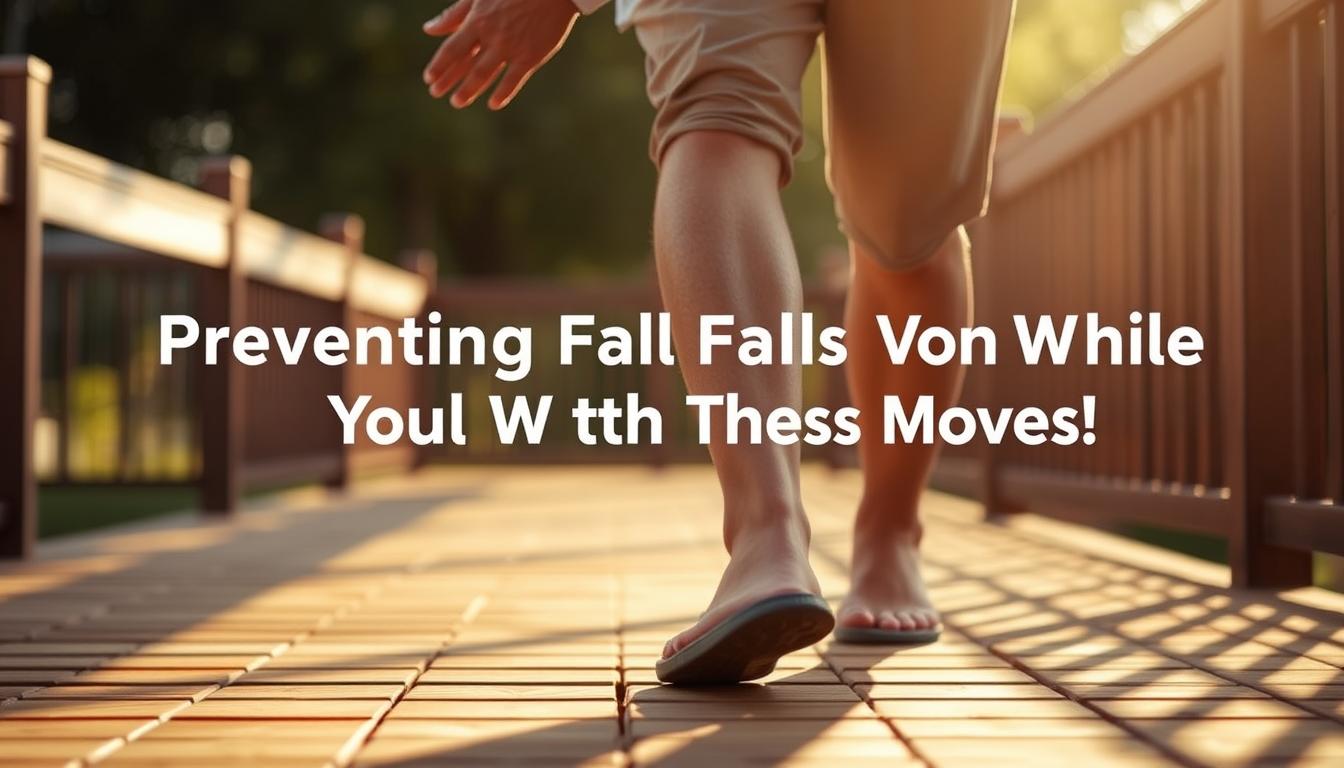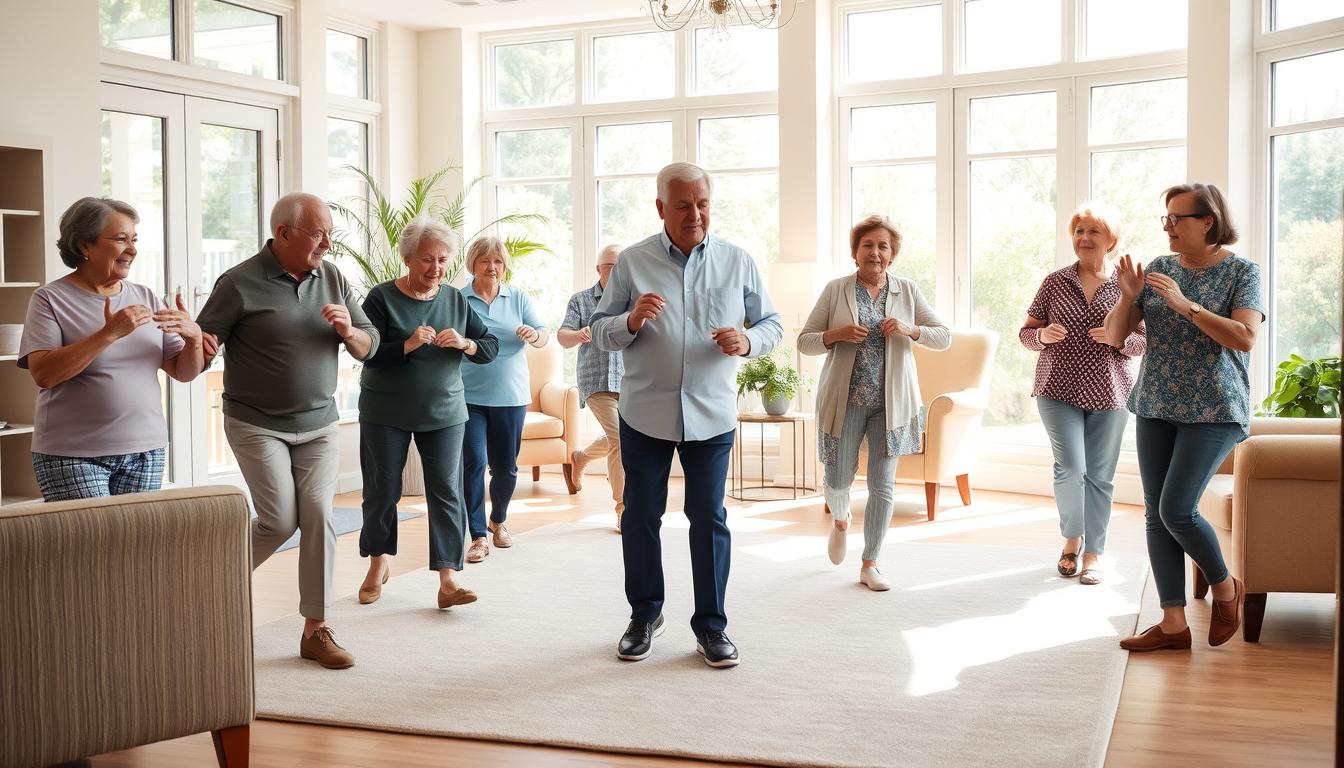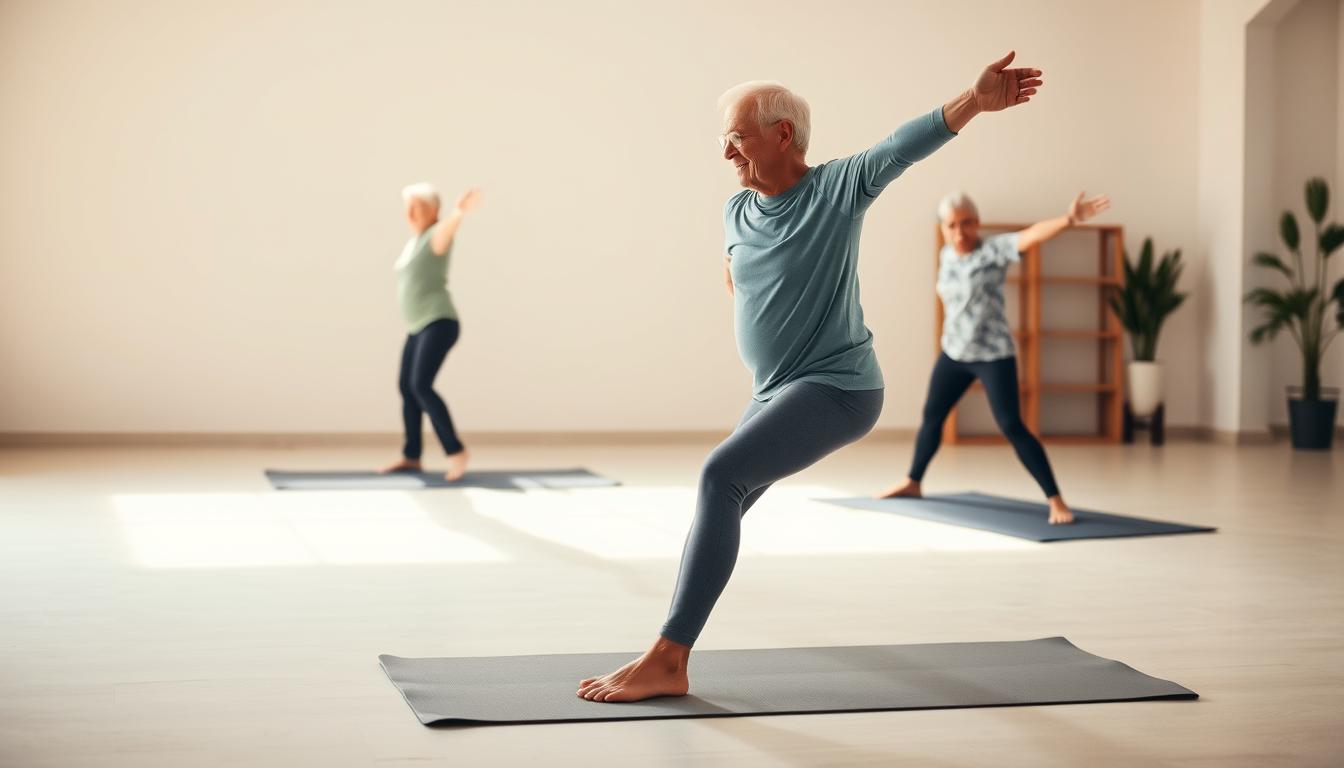Want to slash your fall risk and walk with the confidence of a tightrope walker (minus the circus)? These targeted moves sharpen stability by rebuilding the muscle strength we lose as we age. Real talk: after 50, our bodies start playing Jenga with muscle mass—pull the wrong block, and things get wobbly.
Here’s the good news: I’ve seen folks in their 70s regain rock-solid stability by practicing simple drills like standing on one foot while brushing their teeth. Pro tip: start with your nondominant side. Why? Because if your left leg’s the understudy, it needs more rehearsal time.
Grab shoes with grip—no shuffling in slippers, unless you’re aiming for an impromptu ice skating routine. And posture matters: imagine a string pulling your head toward the ceiling. Hips over ankles, weight evenly distributed. Sounds basic, but you’d be surprised how many people lean like the Tower of Pisa.
My favorite move? The “flamingo stand.” Hold onto a chair, lift one leg, and pretend you’re waiting in line for coffee. Do this daily, and suddenly, uneven sidewalks won’t feel like obstacle courses. Stay tuned—I’ll break down step-by-step techniques that’ll make balance training as routine as morning coffee.
P.S. Always consult your doctor first. Because nobody wants to trade a sprained ankle for stronger legs.
Understanding Balance and Aging: What’s Really Happening?

Ever feel like your body’s GPS is glitching when you pivot to grab the milk? Blame your vestibular system—the inner ear’s balance command center. After 50, it loses about 40% of its hair cells (the ones that detect motion), according to Johns Hopkins research. That’s why 3 million older adults visit ERs yearly for fall-related injuries.
Your Muscles Aren’t Ghosting You—They’re Just Tired
Muscle mass drops 3-8% per decade after 30. But here’s the kicker: your legs lose strength fastest. Picture trying to stand on a subway train using noodles instead of calves. That’s your body on muscle decline.
Real Life = Best Balance Lab
Next time you’re microwaving leftovers, try this: shift your weight to one foot while counting to 15. If you wobble, grip the counter (your kitchen’s built-in stability bar). Most people favor their dominant side—like always leading with the right foot climbing stairs. But your left leg secretly craves attention.
Physical therapists swear by the “joint stacking” rule: ears over shoulders, hips over ankles. Slouching? That adds a risk multiplier. Think of your body as a bookshelf—lean too far, and the whole structure topples.
Pro tip: Use a sturdy chair for micro-drills. Lift one knee while drying dishes—it’s like CrossFit for your balance. Your arms aren’t just for reaching cookies on the top shelf; they’re counterweights when your feet rebel.
Walking Balance Exercises for Seniors in Action
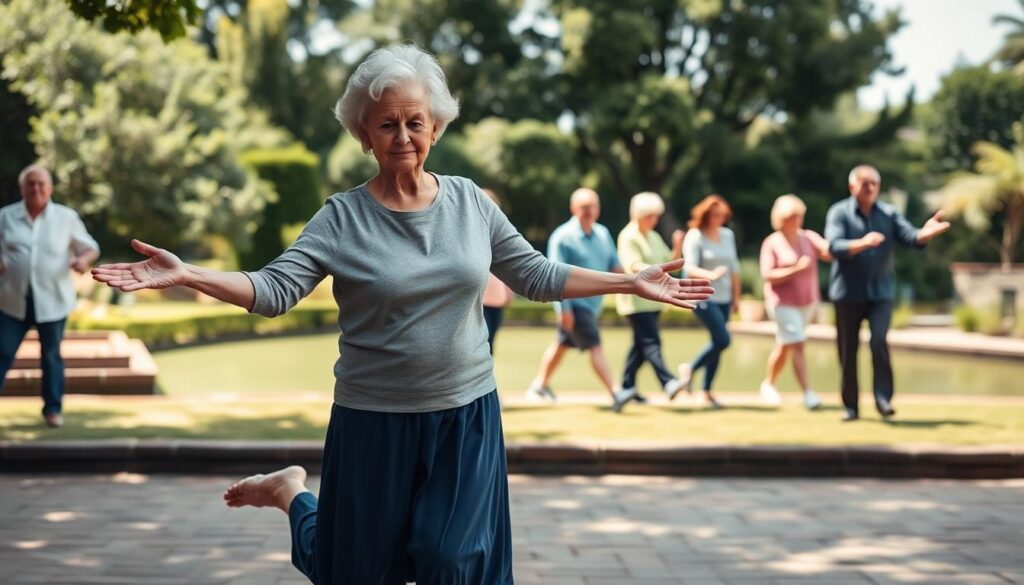
Ready to turn your living room into a stability lab? Let’s ditch the theory and get moving with drills that feel more like play than work. Trust me—your grandkids will want to join in.
Rock the Boat Like a Pro
Stand with feet hip-width apart—pretend you’re on a tiny raft. Now shift your weight to the right until your left foot hovers. Hold for 30 seconds, then repeat on the other side. This isn’t just wobbling—it’s stealth training for your quads and core. Pro tip: Hum “Row Your Boat” for timing. Works every time.
Your Nondominant Side Deserves Love
Most people cheat their weaker leg without realizing it. Try this: During commercials, practice shifting weight to your “lazy” foot first. I call it the underdog workout. You’ll feel like a newborn giraffe at first, but stick with it—weakness becomes strength fast.
Chair = Your New Gym Buddy
Grab a sturdy seat (no rolling office chairs!). Use it for:
- Safety net: Lightly touch the backrest during new moves
- Boosted difficulty: Try standing on one foot while folding laundry
Saw a client transform her stability this way—she now tacklesgolf swingswithout wobbling.
Remember: Progress beats perfection. Start with 10-second holds. Celebrate when you hit 20. Your feet will thank you next time you dodge a rogue sidewalk crack.
Step-by-Step Movement Techniques for Steady Feet
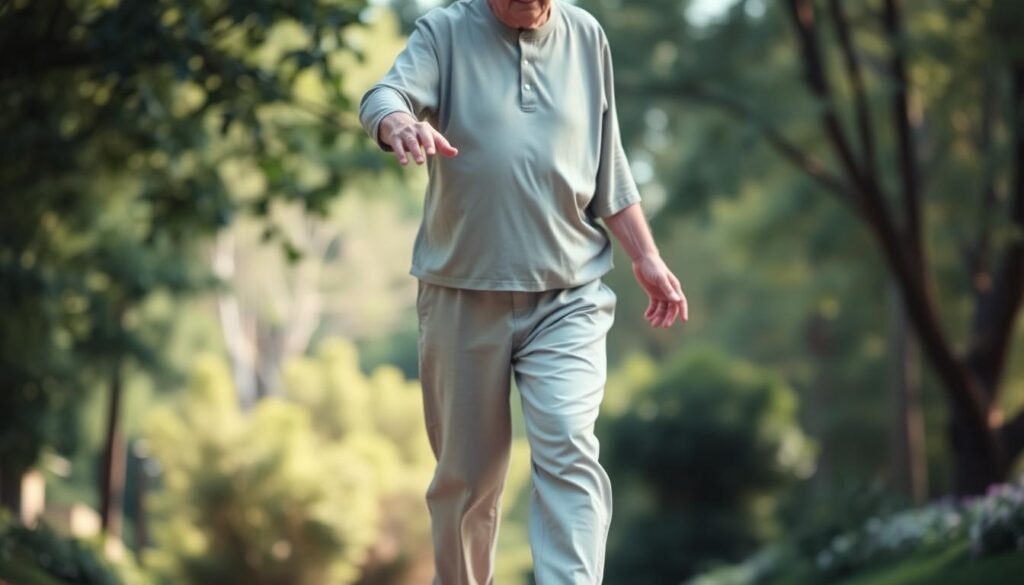
Let’s get tactical. Think of your body as a stack of blocks—one misaligned piece, and the whole tower wobbles. Here’s the scoop: small tweaks to your form can turn shaky steps into rock-solid strides.
Secret Weapon: The Mirror Check
Stand sideways to a mirror. If your hips jut forward like you’re trying to win a belly-dancing contest, reel them back. Proper alignment? Your ear, shoulder, and hip should form a straight line. Bonus: bend your knee slightly—it’s like giving your joints shock absorbers.
| Common Mistake | Fix | Why It Works |
|---|---|---|
| Locked knees | Soft micro-bend (think “ready position”) | Prevents hyperextension |
| Leaning backward | Shift weight toward balls of feet | Activates core muscles |
| Death-gripping chairs | Fingertip touch for light support | Builds independent balance |
When the Floor Feels Like a Trampoline
Unsteady? Grab a chair—but not how you’d expect. Place it sideways and rest one hand on the seat. Now try slowly lifting your right leg an inch off the floor. Hold for 5 seconds. It’s like training wheels for your balance exercises.
Pro tip from PTs: If you’re wobbling during strength training moves, widen your stance. Imagine you’re a surfer riding waves—lower center of gravity = better stability. And hey, if you need to nail those golf swings, this drill’s your golden ticket.
Remember: Progress happens in millimeters. Master the basics first—your muscles will thank you later.
Practical Tips and Tricks to Improve Your Balance

What if your daily routine doubled as balance training? I’ve seen clients transform kitchen counters into stability bars and TV time into strength sessions. The secret? Work smarter, not harder—using what’s already in your environment.
Your New Favorite Chair Workout
Try this during commercial breaks: Scoot forward until your knees align over feet. Press through your legs to stand without using arms—like rising from a throne. Too tough? Push lightly with your hands. Do 5 reps each time your show cuts to ads. You’ll build muscles faster than binge-watching a season.
Household Hacks for Steady Living
Your countertop isn’t just for meal prep—it’s a training partner. Place both hands on the edge while practicing heel lifts. Stagger your feet (one slightly ahead) to mimic uneven terrain. Pro tip: If your right foot feels shaky, shift more weight to that side for 10 seconds.
Physical therapists swear by three rules:
- Modify foot positions weekly (wider stance = more challenge)
- Hold positions 2 times longer than feels comfortable
- Use walls for “shadow boxing” drills—lightly punch air while maintaining posture
I had a student who reduced her risk of falls by doing sit-to-stands while waiting for coffee. Now? She navigates crowded aisles like a pro. Remember: Consistency beats intensity. Do these moves daily, and you’ll notice changes faster than your favorite sourdough rises.
Wrapping Up with Real-World Recommendations for Safer Walking
What if your next step could be your safest yet? Let’s talk strategy. Every year, 36 million older adults experience falls—but here’s the kicker: most injuries happen at home. That loose rug? The coffee table leg? They’re stealth opponents in your balance game.
Try this today: Scan your space like a detective. Clear floor clutter and secure wobbly furniture. Pair these tweaks with daily strength training—even 10 seconds of standing on your right foot while waiting for toast builds resilience. I once coached a client who reduced her risk by 40% just by anchoring her hands to the wall during heel raises.
Your doctor isn’t just for prescriptions—they’re your movement ally. One patient transformed her stability by combining chair drills with her PT’s form checks. Small wins matter: improving balance by 15% can mean dodging a fractured knee during icy steps.
Ready for your next move? Maybe it’s rearranging lamps… or mastering single-leg stands while the kettle boils. Your body’s waiting to surprise you.
